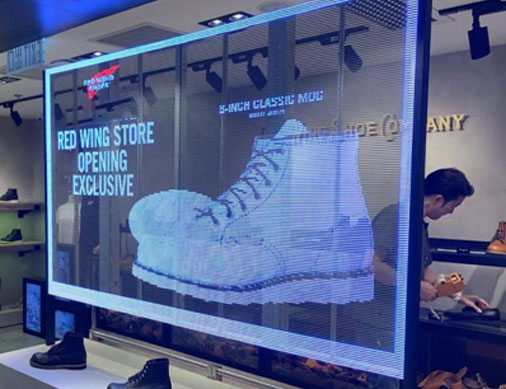When it comes to LED digital signage, the first images that might spring to mind are the giant displays in London’s Piccadilly Circus or NYC’s Times Square. While these signs are certainly memorable and iconic, it’s not just size that matters when it comes to good digital screen design.
As the novelty of huge screens begins to wear off, it can be easiest to grab the attention with content displayed on a series of smaller LED screens. There’s more information for the browser to take in, and they tend to linger and take more note of the contents. If you have multiple products to promote, it simply allows you to get more coverage.
The shape of the screen can also have just as much impact as the size. Screens can now be made from transparent and flexible materials which allow them to drape around the façade of buildings. This gives you far more freedom over the location of your screen, allowing you to access maximum traffic areas, without impacting on the light in the building.
For indoor areas, screens can now be made in curved, convex, concave, fan, and waved shapes, so that they fit in with the flow and rhythm of the building and make the best use of space. In clothing retail areas, they can be combined with crystal clear mirrors to allow the customer to view their clothing choices as they approach.
LED screens can also now be made with tough and durable materials that can withstand foot traffic. This allows them to be used for flooring, on a dancefloor or catwalk for example. They can even be installed to display images over a broad flight of stairs, for that extra wow factor, which is sure to gain attention on social media.

